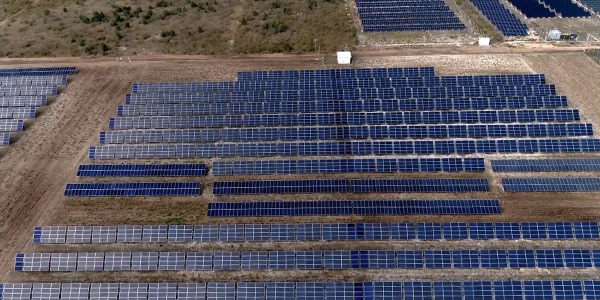Seeking to open communication channels with their distribution utilities, MISO staff held a special workshop Tuesday to prepare for FERC Order 2222.
Kristin Swenson, MISO’s distributed energy resource program director, said the grid operator needs better collaboration with distribution system operators to comply with the order, which allows DER aggregators to compete in organized wholesale electric markets. To do that MISO will need access information typically reserved for distribution utilities.
Swenson said during workshop that MISO’s new DER task force, created to navigate Order 2222 compliance, will begin meeting in January. (See MISO Embarks on Order 2222 Work.)
“The hope is we begin to have an idea in March, a conceptual design, so we can come to stakeholders with, ‘Here’s what we think we should do. What do you think?’” Swenson said. She said MISO would like to have a proposal by June that the legal team can prepare for a July filing.
“Any time we alter our Tariff, we have to cross-check the whole Tariff to make sure we inadvertently didn’t change any meanings,” Swenson said.
Per Order 2222, MISO will create a “coordination framework” to guide interaction with relevant electric retail regulatory authorities, distribution utilities and DER aggregators — including both documented procedures and operating agreements.
“It’s OK that we don’t know what the plan will be right now,” Swenson said. “The control systems, while there are a lot of cool ones out there, haven’t been widely adopted yet.”
MISO has compiled a draft list of the information it might need to collect before opening its markets to DER aggregators. While the grid operator envisions amassing data on obvious items like inverter type and settings, maximum capacity, weather, possible operating modes and historical production data, it may also collect more obscure data such as remote-control capabilities and tree cover or building shadows that could obstruct solar panels. MISO said it is interested in refining the list with distribution utilities.
Staff said they need more information from distribution utilities before they can form a conceptual design for DER market participation.
“We’re very interested in distribution operations expertise,” Swenson said.
The RTO would like to know utilities’ established standards of data collection from their DERs, the demand for interconnection to distribution systems, whether companies are selling DER services and whether they’ve experienced a “significant” number of non-solar DER requests such as batteries, electric vehicles or standby diesel generator sets.
Swenson said staff are also looking for information on how distribution utilities forecast DER growth. MISO doesn’t currently include DERs in its planning models.
Swenson said as MISO’s DER program manager, she’s often asked how many such resources the footprint will add. She said her answer is usually “not satisfactory” to members: The RTO doesn’t know.
“Because DER additions are not driven like traditional generation, it’s hard to forecast,” Swenson said. She said MISO is experiencing a steady increase in distributed generation assets in its footprint and expects the trend to accelerate with Order 2222.
Distribution representatives said gathering that information would be no easy feat, requiring conversations with multiple employees and executives.
“Other ISOs have said you have to start with operational coordination. We can create the best market design in the world, but without operational coordination none of this will work,” Swenson said. “Obviously, Order 2222 envisions a world with more DERs, but without coordination we will have something that no one wants to participate in.”
Stakeholders asked whether MISO would grandfather existing DERs already connected to distribution systems in its footprint.
Managing Assistant General Counsel Michael Kessler said state jurisdictions retain authority under Order 2222, so grandfathering will most likely be left to states and applicable distribution companies.
Swenson said the DER participation models put forth by California and New York are helpful only to a point, reminding stakeholders that those ISOs answer to just one set of state regulators.
“MISO is obviously a multistate RTO. There are many parties involved,” she said. “We’d like some standardization; at least from MISO’s perspective, it’s far easier.”




